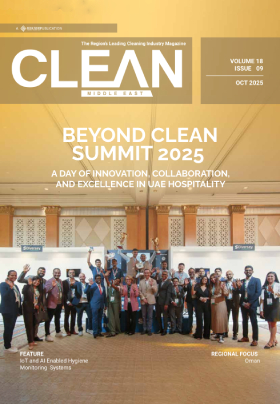
They're being purchased not just by hospitals and nursing homes but across a wide spectrum of public facilities. This includes government buildings, offices, hotels, airports and universities. Human-friendly robots, which were commonly deployed for machine tending and warehouse rack-stacking are now being redeployed in the war on coronavirus.
Researchers at the USC Viterbi Center for Advanced Manufacturing rehashed a semi-autonomous mobile manipulator, a type of robot commonly used in small factories and warehouses. The result was the “ADAMMS-UV” robot, which comprises three different hardware components. For a mobile base, the team used an Inspectorbots’ SuperMega Bot. Over this, they mounted the UR5 arm. On the arm, a Robotiq twofingered gripper was set. Then they fitted their creation with UV-light wands, augmented vision guidance and new software so it could learn detailed, dangerous disinfection tasks in places such as dorm rooms and offices. The USC team’s robot is paired with a human operator working remotely, making high-level decisions, such as pause, open that drawer, etc.
Studies also reveal that enquiries in the mobile robot space (surrounding UV-light and chemical disinfection) have shot up since March 2020.
The wave of UVD robots
UV light is proved to disinfect surfaces from viruses and bacteria, including the Coronavirus. If Coronavirus is exposed to UV light of sufficient intensity for an appropriate amount of time, it gets destroyed. When coupled with robotics, the two technologies disinfect at just the right speed and consistency in a manner that a human would find impossible to achieve. In fact, back in 2018, it was verified at Odense University Hospital that UVD robot's were able to reduce an ICU room's bacteria level by 80%.
Earlier this year, hundreds of fully autonomous ultraviolet-light-disinfection robots were shipped to China from Denmark and hundreds more were shipped to Europe in March. In fact, it would be apt to say that hospitals and other non-healthcare facilities around the world are waking up to autonomous disinfection. Even before the pandemic began, the market for service robots in general had been showing significant growth. Approximately 271,000 of these types of robots were sold globally in 2019, according to data from the International Federation of Robotics. That's an increase of 61% from 2018. With COVID-19 on the surge, cleaning robots could become indispensable in the near future.
7 ways robots fight against the COVID-19 pandemic
1. Robots will roam the hospitals of the future with a comprehensive infrastructure.
2. Robots that can disinfect hospital wards autonomously.
3. Robots deliver medicines, blood tests, food and help with hospital logistics in general and hence safeguard the medical staff from the Coronavirus.
4. Robots also help speed up the corona virus tests.
5. Robots can be programmed to detect fever and also dispense hand sanitiser. This programming can be deployed in places like malls, airports and hospitals.
6. Robots can also be programmed with speech based Q&A to deliver COVID-19 awareness and telemedicine, making it possible for medical professionals to communicate with patients remotely.
7. Last, but not the least, disinfection robots equipped with a dry mist space sterilisation space system with strong sterilisation ability that can be used in public places like offices, malls, hospitals, airports and banks.

Abu Dhabi airport to use cleaning robots
Abu Dhabi airport is at par with this emerging global technology as a fleet of robots are being rolled out in the facility for disinfection and screening of passengers using infrared thermal technology.
The robots will be piloted throughout Abu Dhabi International Airport, including staff areas and cargo facilities. They will also be used in cabin cleaning processes on passenger aircrafts.
The deployment of artificial intelligence adds another layer of protection in the airport and builds on its comprehensive response to the COVID-19 outbreak. In fact, the adoption of such technologies is urgent for the big Gulf hubs such as the Dubai International Airport, which is reported to have handled 86.4 million passengers in 2019 alone, making it the world’s busiest hub for international passengers.
Although many cleaning companies are still contemplating the use of robotics because of the additional costs and training, when the benefits of using the new technology are identified and documented, things will change.

.jpg)
.jpg)
 Search
Search.jpg)



